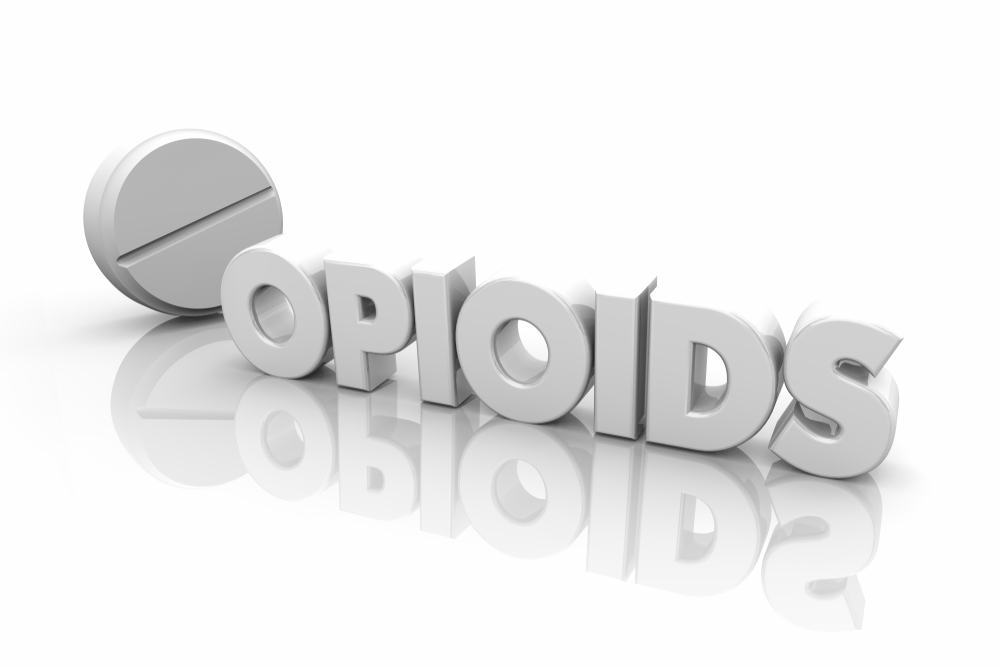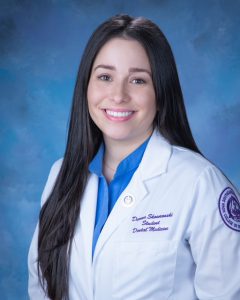INTRODUCTION
Opioids have been used and prescribed for acute and chronic pain in the United States since the 1800s. Opioids are a class of molecules that bind to a particular cell surface receptor, the opioid class. They are typically strong narcotics, inducing relief from acute or chronic pain. Pain is a feeling that alerts you that something is wrong. Pain can contribute to other physical bodily symptoms such as dizziness, drowsiness, and nausea. Modern humans however have turned to medications to alleviate the pain sensation, and over the course of history, our collective tolerance for pain has declined.

The Alarming Prevalence of Opioids in Dental Pain Prescriptions: A Need to Educate Dental Students
Morphine and codeine, derived from botanical sources, are the oldest of the opioid class of drugs, being used worldwide for centuries. In the last few decades, however, synthetic opioids began to gain popularity in the Western medical community. Oxycodone and hydrocodone are semi-synthetic opioids, and these compounds have seen an increase in use as prescription pain relievers since about 1995, when oxycodone was first marketed as OxyContin in the US.
For some context, consider the long history of opioid narcotics.1 As far back as 8,000 years ago, Sumerian clay-tablets served as opium prescriptions. It was found that wounded soldiers, from the American Civil, British Crimean, and Prussian French wars used—and abused—these drugs. By the 1830s, one third of all lethal poisoning was biproduct of opium-marketing. In Germany, in 1805, Sertener discovered how to isolate and produce morphine from opium. Opium comes from the sap of unripe poppy-seed pods. Once the sap dries it forms a brown latex material which contains alkaloids that can be used to produce heroin, methamphetamine, morphine, and codeine. Tschudi, in 1952, became known for the manufacturing of synthetic derivatives—called opioids—and heroin.
There are 3 opioid receptors, DOP, KOP, and MOP.2 As an aside, the NOP receptor is classified as the non-opioid branch of the opioid receptors. Opioids have the ability to act as agonists, antagonists, or partial agonists at all these receptors. An agonist can bind the G-protein coupled receptor which results in hyperpolarization. Several of the clinical opioid analgesics that are prescribed bind to MOP receptors in the central and peripheral nervous system. This produces the analgesic effect.
While there was great excitement initially about the potential of oxycodone to be an inexpensive and efficacious alterative to morphine, it rapidly became obvious that this medication was amenable to gross misuse and abuse. The opioid epidemic began in the late 1990s as oxycodone and related drugs induced addiction and fueled the devastating fraying of the culture that we all are aware of today. The addictive underpinnings of opioids are a complex interplay between biology and sociology, but it is becoming clear that genetics play an important role and have been linked to addiction in 50% of cases.3 Prescription opioids are continuing to contribute to opioid dependence and the overdose epidemic in the United States. In 2019, over 14,000 people died from overdoses associated with prescription opioids.4CDC’s National Center for Health Statistics indicate that there were 100,306 drug overdose deaths in the United States from April 2020 to April 2021,4 which represented an increase of 28.5% from the 78,056 deaths during the same period the year before. Naturally, these rises coincide with spikes in street use of synthetic opioids such as fentanyl and of psychostimulants such as methamphetamine. Cocaine deaths also increased, as did deaths from both natural and semi-synthetic opioids—such as prescription pain medication.
OPIOIDS IN THE DENTAL FIELD
The prescription of opioids for pain has also infiltrated dentistry, and this is where the education of dental students could be enormously beneficial. The most commonly prescribed opioids in dentistry are codeine, oxycodone, and tramadol. Dentists who graduated in the 1980s and 1990s learned to prescribe medications such as Vicodin and Percocet in quantities of 30 tabs with 2–3 refills. By contrast, currently it is advised to prescribe these drugs in quantities of 3–5 tabs with no refills.
According to data from the National Institute of Dental & Craniofacial Research, overdose risk is higher among patients who fill an opioid prescription after a dental procedure, compared to those who do not.5 The patient’s family members are also more likely to overdose as well compared to the general population. Moreover, unfortunately patients who are unable to afford their prescription drug addiction begin to seek out drugs such as heroin, which is less costly and still can provide euphoria.
Dental pain has been well studied. Teeth are innervated by A (myelinated) and C (unmyelinated) nerve fibers. Both fibers have sensory afferent fibers and sympathetic fibers that control pulpal blood flow. In the pulp, branches of the sensory nerves give rise to the subodontoblastic plexus. Nerve fibers then are able to extend to the odontoblastic layer, predentin, and dentin and they terminate as free nerve endings. Pulpal stimulation is unpleasant and associated with pain. When fluid moves in the dentin tubules and activates the A fibers, sensitivity can result. The C fibers respond to unpleasant stimuli that affect the pulp. It is not known what the role of odontoblasts plays in pain. Dentin sensitivity, however, does not seem to be changed by their demise. Inflammatory mediators and intrapulpal pressure changes lower the pain threshold of nerve endings in the pulp.6
The issue is pain, the “fifth vital sign,” is subjective. The demand for pain relief has put significant pressure on healthcare professionals, including dentists, to prescribe opioids. Dental pain does not discriminate and affects all ages. For many adolescents and young adults, dental pain is usually the first encounter with opioids. Dentists have historically been the largest source of opioid prescriptions for this young age group because of the procedure of third molar extractions. Continuous opioid use following the original prescription from the dentist has been identified in this age group as well. A recent study by Hudgins et al found that adolescents (13 to 17 years old) and young adults (18 to 22 years old) were prescribed opioids at the highest rate for dental disorders (59.7% and 57.9%, respectively).7
However, there is no need to resort to opioids for the alleviation of dental pain. Isolating and treating the pain source is the best course of treatment. Medications are considered supportive therapy. In 2016, U.S. dentists wrote more than 11.4 million opioid prescriptions, while dentists in England only wrote 28,082, a 37-fold lower per capita rate.
In the course of post-dental treatment such as an extraction or periodontal surgery, the healing phase involves the release of prostaglandins from the site of injury. Non-Steroidal Anti-inflammatory Drugs (NSAIDs) will inhibit prostaglandin formation along with managing pain. NSAIDs have no effect on cognition or motor skills, unlike opioids. Research has shown that the use of NSAIDs, is equal or superior to that provided by opioid-containing medications. Consequently, NSAIDs are superior to dealing with dental pain than opioids,8 because they combat the inflammatory component post procedure and thereby alleviate pain; odontogenic pain has an inflammatory component. In fact, codeine is no longer recommended and was rescheduled to a prescription-only medicine in February 2018.
Dental students should be informed that NSAIDs can be a preferred first pain treatment option. To lessen the chances of opioid dependency or addiction, a prescription of 400 mg ibuprofen (eg, MOTRIN) plus 1000 mg extra-strength acetaminophen (eg, TYLENOL) is preferred over Vicodin or Norco. Despite the advantages of NSAIDs, there will be continued use of opioids to treat dental pain, at least in the near term. Students thus should also be educated in the means to recognize and combat addiction. Signs, or “tells” of addiction include depression, dilated or contracted pupils, decreased breathing rate, confusion, sweating, and slurred speech. Overdose is indicated by shallow or irregular breathing, nausea/vomiting, pin-point pupils, and/or convulsions. For treating addiction, effective antagonists exist with quick-acting power. Naloxone is specific opioid antagonist used in overdose situations, but only works if the patient has taken opioids. There is no interaction with the drug if opioids are not present. For emergency situations, NARCAN Nasal Spray should be given ASAP. Repeated doses may be needed.
SUMMARY
The opioid epidemic is real, exigent, and partially a result of excessive dental analgesic prescriptions. For dental pain, opioids are not contraindicated, nor are they always a bad option. However, we advise that students be taught to be responsible when prescribing opioids. Familiarize them with the phrase, “Lower Doses, Fewer Days,” and urge that they try non-opioid options first. Educate your patients on the side effects of opioids and strong potential for addiction. Remind patients, “it may hurt, that is normal!” Become familiar with state and federal regulations regarding prescription of controlled substances, including the use of prescription drug monitoring programs such as E-FORCSE & MAPS. The average number of pharmaceutical drug deaths per day in the United States is 61. Together, we can work to lower that number by a significant margin in the 2020s.
REFERENCES
- Bandyopadhyay S. An 8,000-year history of use and abuse of opium and opioids: How that matters for a successful control of the epidemic? Neurology 2019;92:4.9–055 (15 Supplement).
- Pathan H, Williams J. Basic opioid pharmacology: an update. J. Pain 2012;6(1): 11–16.
- Understanding Drug Overdoses and Deaths. US Centers for Disease Control, CDC Injury Center. At: https://www.cdc.gov/drugoverdose/epidemic/index.html. Accessed October 26, 2022.
- 2019 Drug Overdose Death Rates. US Centers for Disease Control, CDC Injury Center. 2021 At: https://www.cdc.gov/drugoverdose/deaths/2019.html. Accessed October 26, 2022.
- Opioids – Information for Dentists. NIH, National Institute of Dental and Craniofacial Research. At: https://www.nidcr.nih.gov/health-info/opioids-information-dentists. Accessed October 26, 2022.
- Nain N, Gupta A, Meena N. An insight into the neurophysiology of pulpal pain: Facts and hypotheses. Korean J Pain 2013;26(4):347–355.
- Hudgins JD, Porter JJ, Monuteaux MC, Bourgeois FT. Trends in opioid prescribing for adolescents and young adults in ambulatory care settings. Pediatrics 2019;143(6):e20181578.
- Reynolds WR, Schwarz ES. Dentists’ current and optimal opioid prescribing practices: A proactive review. Missouri Medicine 2019;116(5):347–350.
ABOUT THE AUTHOR
Deanna Skowronski is a third-year dental student at Nova Southeastern College of Dental Medicine. She is actively involved in her college and proudly serves as vice president of her class, chair of the student ambassadors organization, and a student representative for the Oral & Maxillofacial Surgery Club. Deanna most recently has been awarded the Prosthodontic Department Case Presentation Award and is a ADEA ADCFP fellowship recipient.

Deanna Skowronski
Her passion for educating individuals about non-opioid pain management stems from her involvement with Families Against Narcotics, an organization whose mission is to change the face of addiction, dispel the stigma of addiction, and educate the community, as well as those affected by addiction. Following graduation, Deanna hopes to return to Detroit and practice alongside her father, who is a general dentist. She can be reached at ds2732@mynsu.nova.edu.
Disclosure: The authors report no disclosures.
FEATURED IMAGE CREDIT: iQoncept/Shutterstock.com.












